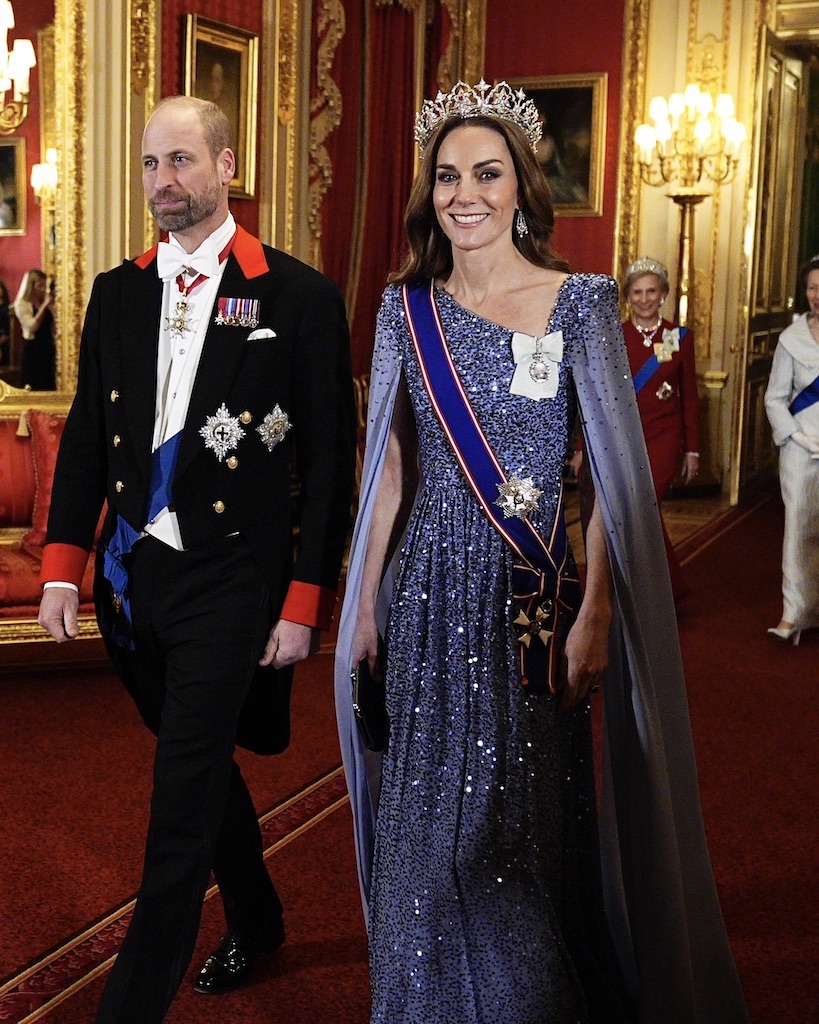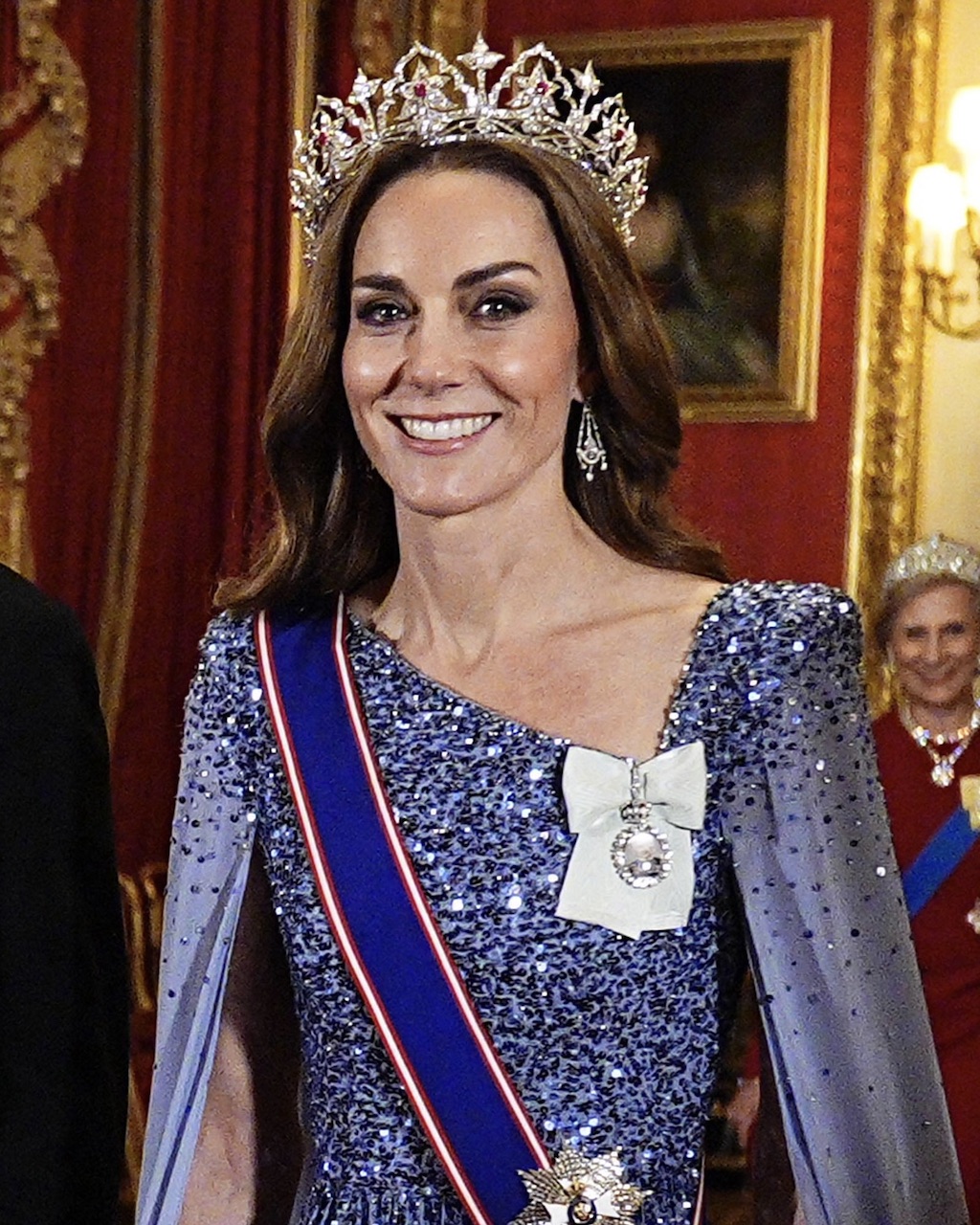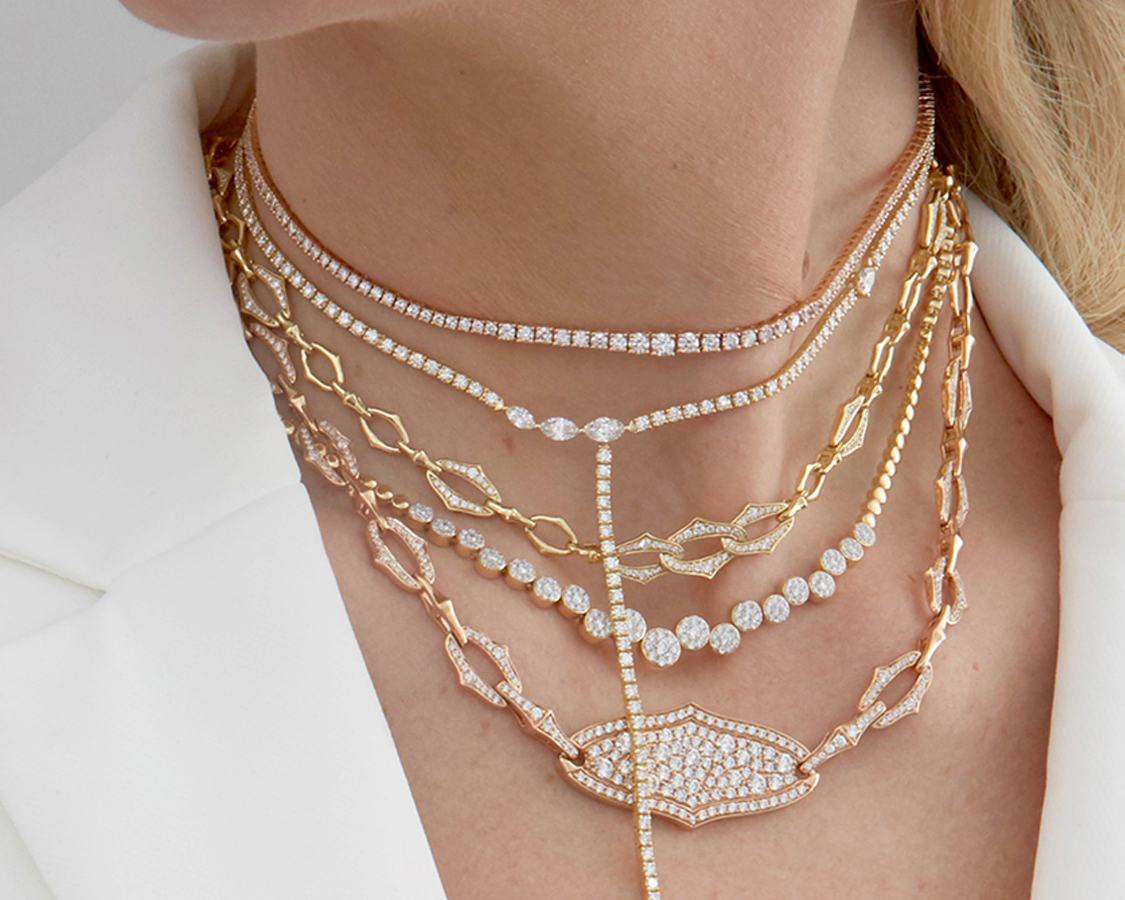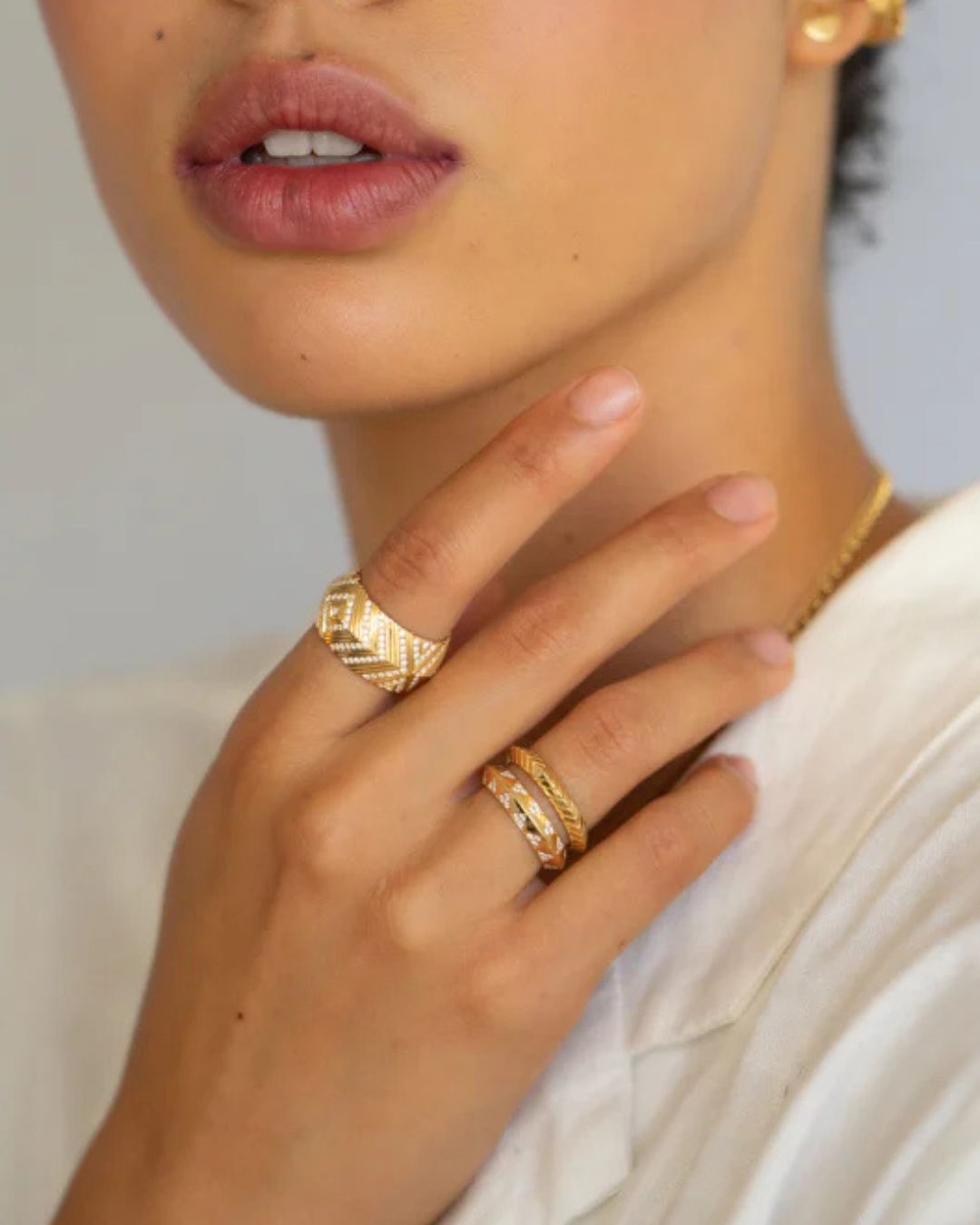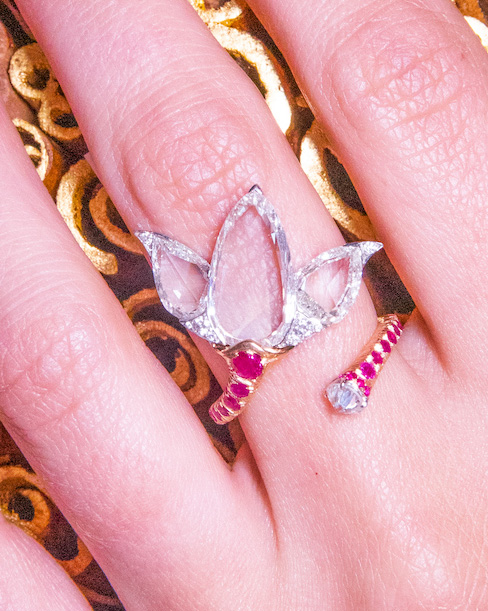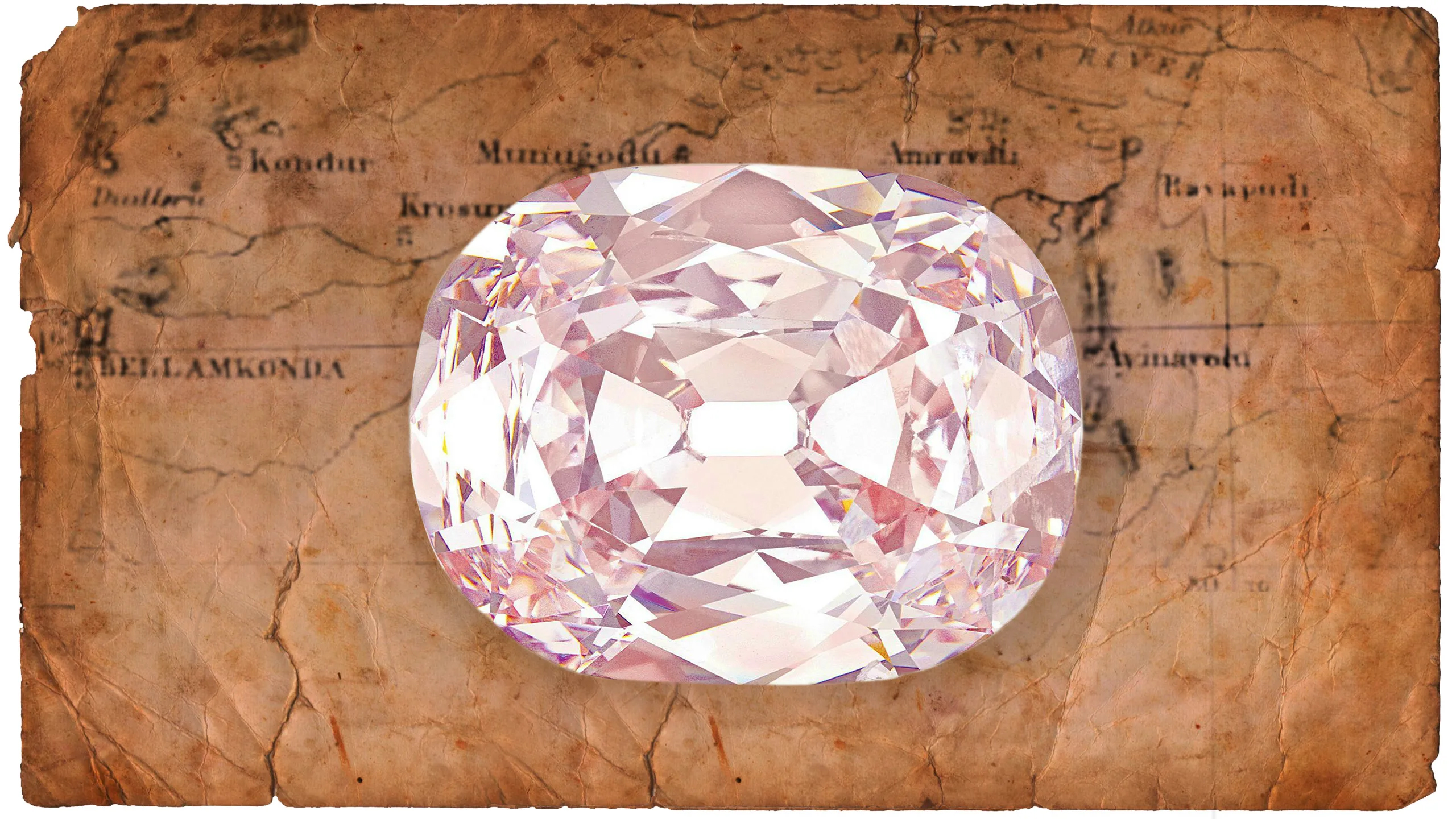< Historic Diamonds / Royal Stories
A Guide to Queen Elizabeth II’s Royal Tiaras
In honor of Queen Elizabeth II, take a look back on Her Majesty’s historic collection of royal tiaras, covered in dazzling diamonds and remarkable gemstones.

Queen Elizabeth II poses for a portrait at home in Buckingham Palace in December 1958 in London, England.(Getty Images)
Throughout her 70-year reign on the British throne, Queen Elizabeth II wore some of the most remarkable royal tiaras of all time. While her collection included rubies from Burma and aquamarines from Brazil, it’s Queen Elizabeth’s historic natural diamond diadems that remain unmatched.
The royal vaults are filled to the brim with regal finery. While Queen Elizabeth II inherited diamond tiaras from Queen Victoria, Queen Alexandra, and her grandmother, Queen Mary, she also commissioned pieces of her own, adding to the family’s glittering legacy of heirlooms.
Meet the Expert

- Claire Scott is the Design & Development Director at Garrard.
- Scott previously held positions like Senior Jewelry Designer and Head of Design at the first official Crown Jeweler.
- With over 20 years of experience in the luxury jewelry industry, Scott has developed iconic collections and custom commissions at some of the most prestigious jewelry houses in the world.
Here, Only Natural Diamonds takes a look back at Queen Elizabeth II’s impressive collection of royal tiaras.
Queen Mary’s Fringe Tiara


Queen Mary’s diamond Fringe Tiara has seen many royal weddings in its lifetime. Most notably, Queen Elizabeth II chose the headpiece for her nuptials to Prince Philip at Westminster Abbey in London on November 20, 1947. Queen Mary passed down the tiara to her daughter-in-law, Queen Elizabeth (later known as the Queen Mother), in 1937. The Queen Mother later lent the jewel to her daughter, Princess Elizabeth, for her wedding day
The tiara is mounted on a specific frame that allows the tiara to be transformed into a necklace, which leads us to one of the tiara’s most notorious tales. The piece famously almost caused the then-Princess Elizabeth to be late to her own wedding. As she was getting ready with her dresser at Buckingham Palace, part of the wedding tiara snapped off. The court jeweler rushed to Garrard with the tiara in tow, escorted by police to ensure it was repaired in time.



In 2011, Queen Elizabeth II recalled the story to Kate Middleton when they toured a Buckingham Palace exhibition. “The catch, which I didn’t know existed, it suddenly went [gesturing her breaking the tiara with her hands].”
Queen Elizabeth II’s daughter, Princess Anne, kept tradition alive when she wore the same tiara to marry Mark Phillips in 1973. Another generation would keep the tradition alive for her wedding day when Queen Elizabeth’s granddaughter, Princess Beatrice, wore Queen Mary’s Fringe Tiara for her 2020 wedding to Edoardo Mapelli Mozzi. She paired the over 100-year-old headpiece with the same Norman Hartnell gown Queen Elizabeth wore for the April 1966 opening of Parliament.
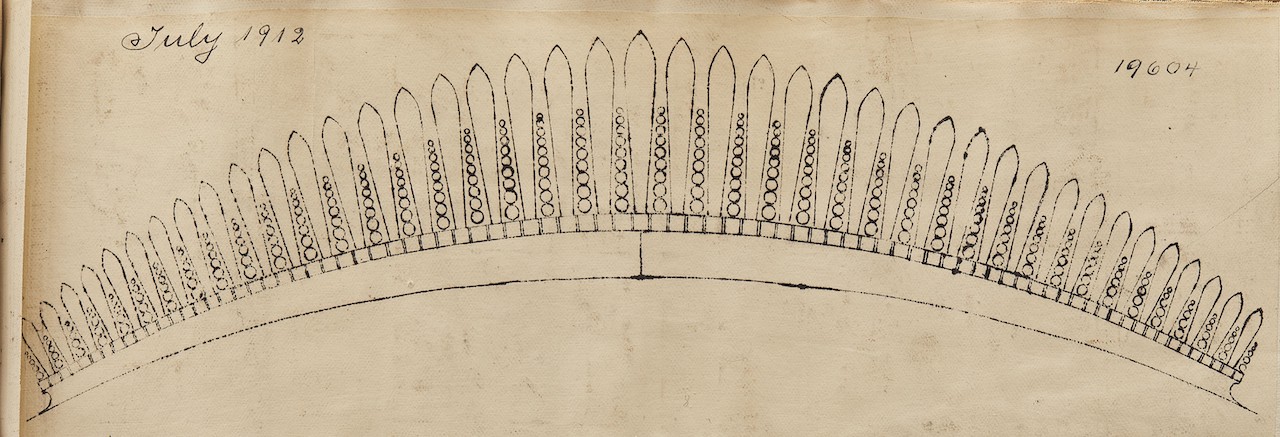
The Fringe Tiara features 47 pointed bars of brilliant-cut and rose-cut diamonds, alternating with smaller prongs of lozenge-shaped brilliant-cut diamonds. Similar in style to Queen Alexandra’s Kokoshnik Tiara, Queen Mary’s Fringe Tiara is slightly smaller—and therefore more manageable to wear. Originally called the Collingwood Fringe Tiara, it was a wedding gift from Queen Victoria, the grandmother of Mary’s future husband.
Few jewels hold more sentiment and romance than one worn by three royal brides on their wedding day.

Garrard, the official crown jeweler at the time, recently rediscovered two of their handwritten royal ledgers. On November 3, 1919, the ledger recounted the notes, “Mounting 633 brilliants and 271 rose diamonds from your Majesty’s own tiara, bracelet, and monogram in gold and silver settings in a Russian pattern tiara with adjustable head frame, allowing for old settings.”
According to Design & Development Director at Garrard, Claire Scott, “The Fringe Tiara is a true testament to Garrard’s exquisite craftsmanship and technical mastery. The fact that it can be worn as a fully articulated necklace without any additional components is a feat of artistry and precision that defines our heritage.” She explains, “Stories and histories often enhance the allure of a piece of jewelry, but few can hold more romance than one worn by three royal brides on their wedding day.”
Queen Mary’s Cambridge Lover’s Knot Tiara
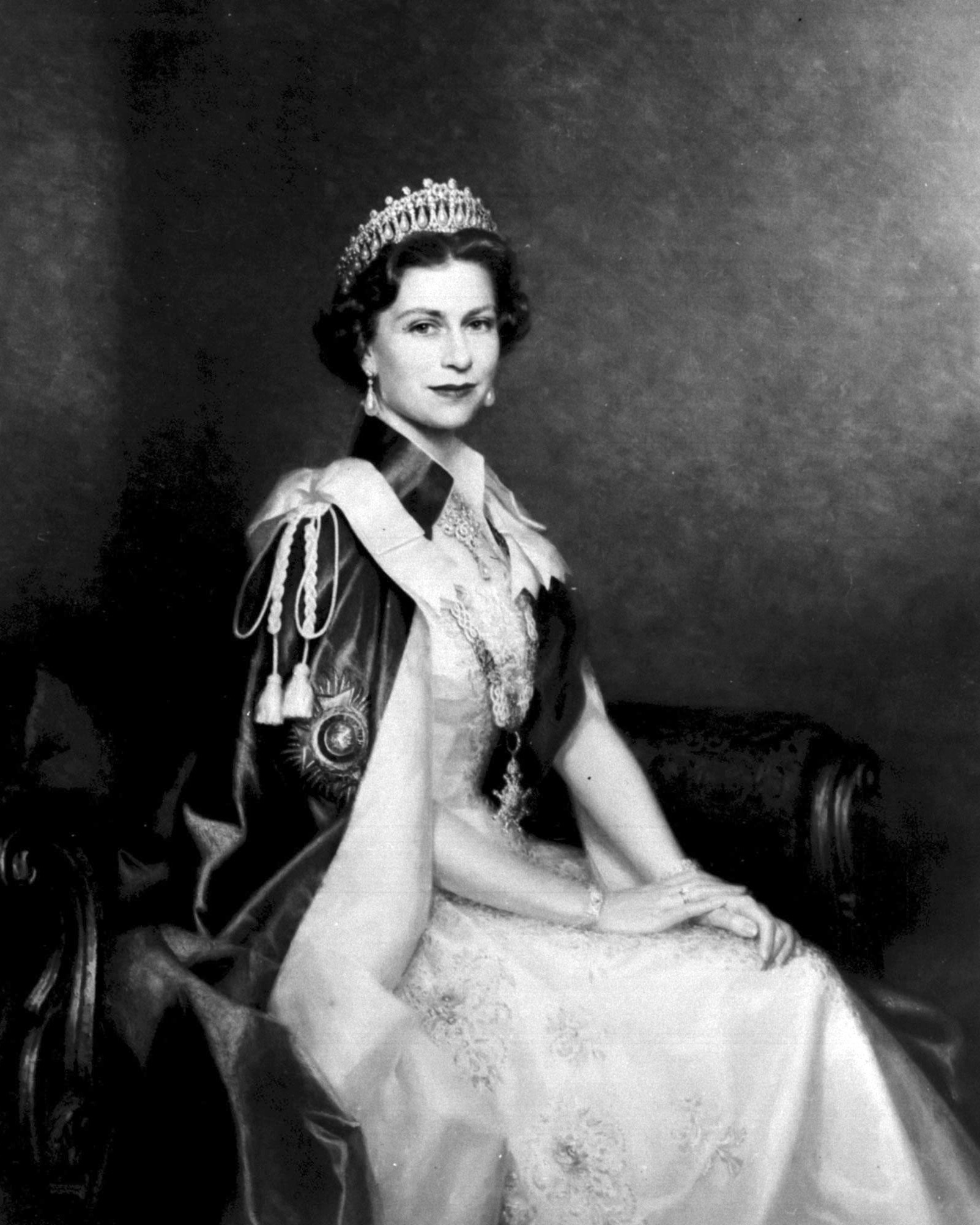
Queen Elizabeth II’s pearl and diamond-encrusted Cambridge Lover’s Knot Tiara was commissioned by Queen Mary (Mary of Teck, Queen Elizabeth II’s paternal grandmother) in 1913, crafted by the House of Garrard, the first official Crown Jeweler.
Queen Mary requested the piece replicate that of a design owned by her maternal grandmother, Princess Augusta of Hesse, the Duchess of Cambridge. Queen Mary provided one of her existing tiaras— the Ladies of England Tiara— and other diamond and pearl pieces from her jewelry box to use for the Lover’s Knot.
Consisting of 19 archways of brilliant and rose-cut diamonds, the headpiece is capped with a diamond ribbon “lover’s knot” bow motif, including 19 dangling pear-shaped baroque pearl drops. “The suspended pearls give the Lover’s Knot Tiara a rare sense of movement and life, a hallmark of Garrard’s craftsmanship and heritage,” says Scott.
Previously, the tiara included an extra 19 pearls that pointed upright from each diamond curvature. The pearls were taken from the Girls of Great Britain and Ireland Tiara. Since then, they’ve been replaced with a row of standalone brilliant-cut diamonds.
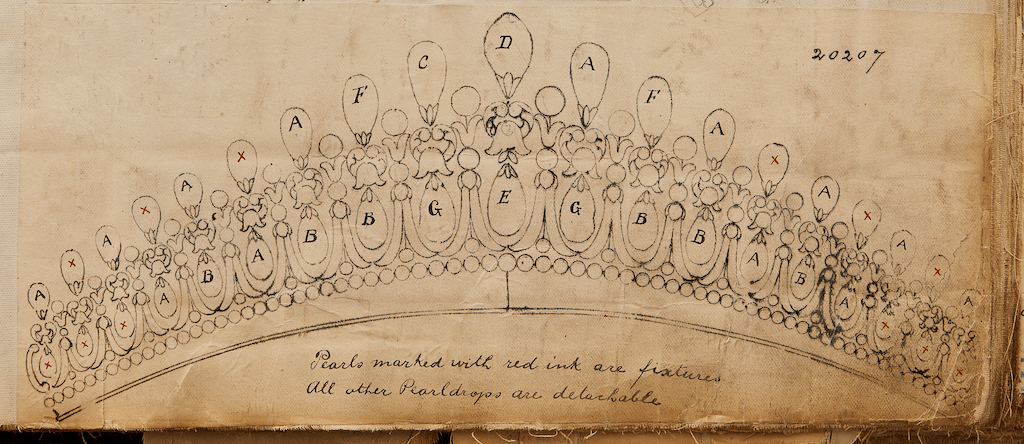
“The Lover’s Knot Tiara is a true expression of Garrard’s design language, where romantic symbolism meets exquisite craftsmanship,” says Scott. “The suspended baroque pearls bring the piece to life, giving it movement and grace. The lover’s knot itself is deeply tied to our heritage, a reimagining of the Sovereign motif, notably seen on the Sovereign’s Scepter set with the Cullinan I diamond. This design thread runs through our 290-year history, continuing to inspire today’s high jewelry designs and collections.”
After Queen Mary passed away in 1953, she left the tiara to her granddaughter, Queen Elizabeth II. Her Royal Highness went on to wear the Lover’s Knot consistently throughout the 1950s, before shifting towards her more recent favorites, like the Girls of Great Britain and Ireland tiara. Queen Elizabeth II had the Lover’s Knot immortalized in portrait form in 1957, posing in the tiara for British painter Leonard Boden for the Royal Military Academy.
After marrying Prince Charles in 1981, Princess Diana received a treasure trove of royal family jewels from the Queen on permanent loan, including the Lover’s Knot Tiara as a wedding gift. One of Princess Diana’s favorite pieces of jewelry, the royal wore the Lover’s Knot so frequently that it became synonymous with some of her most iconic style moments, including the state opening of Parliament and her white beaded Catherine Walker Elvis dress worn in Hong Kong in 1989.
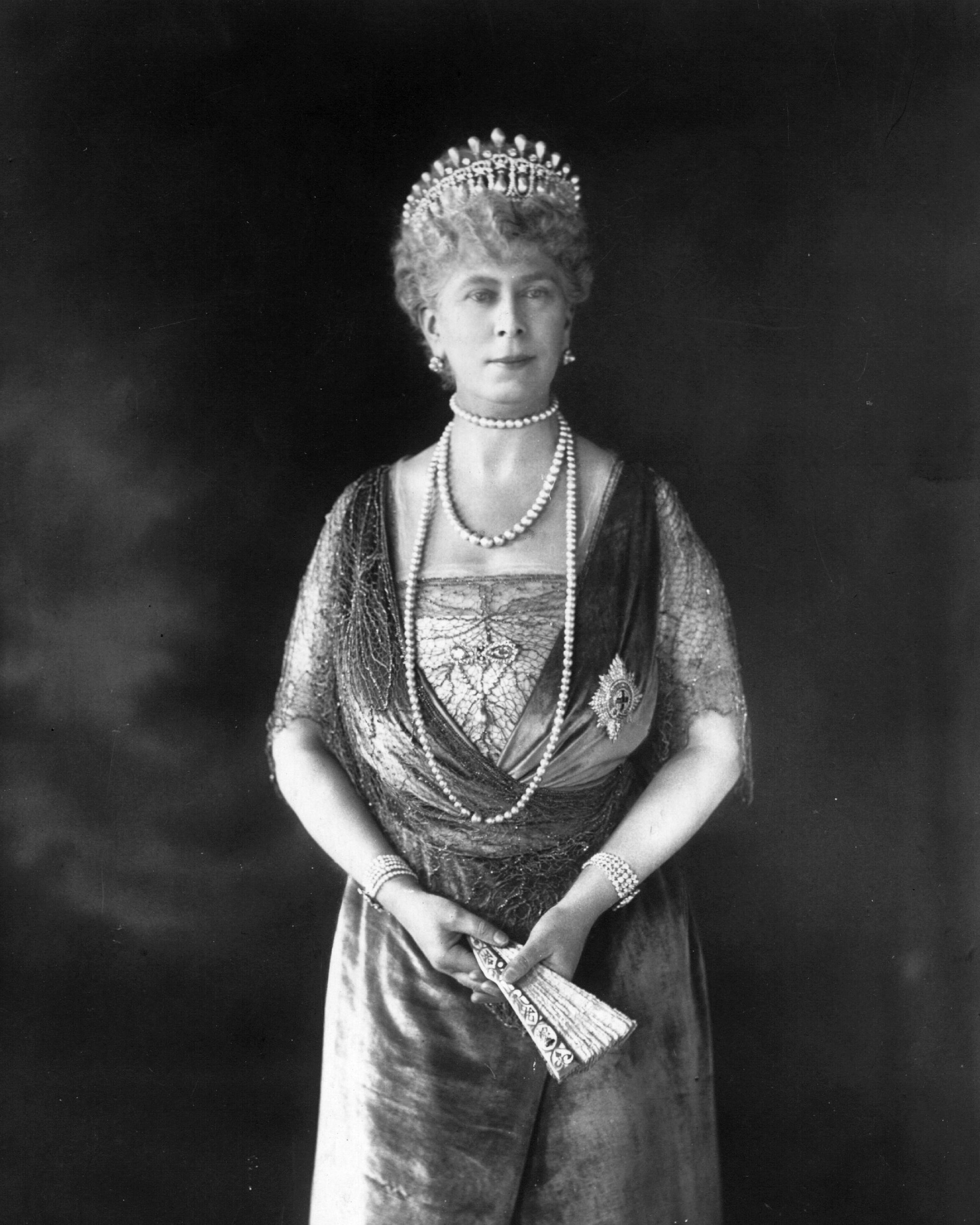
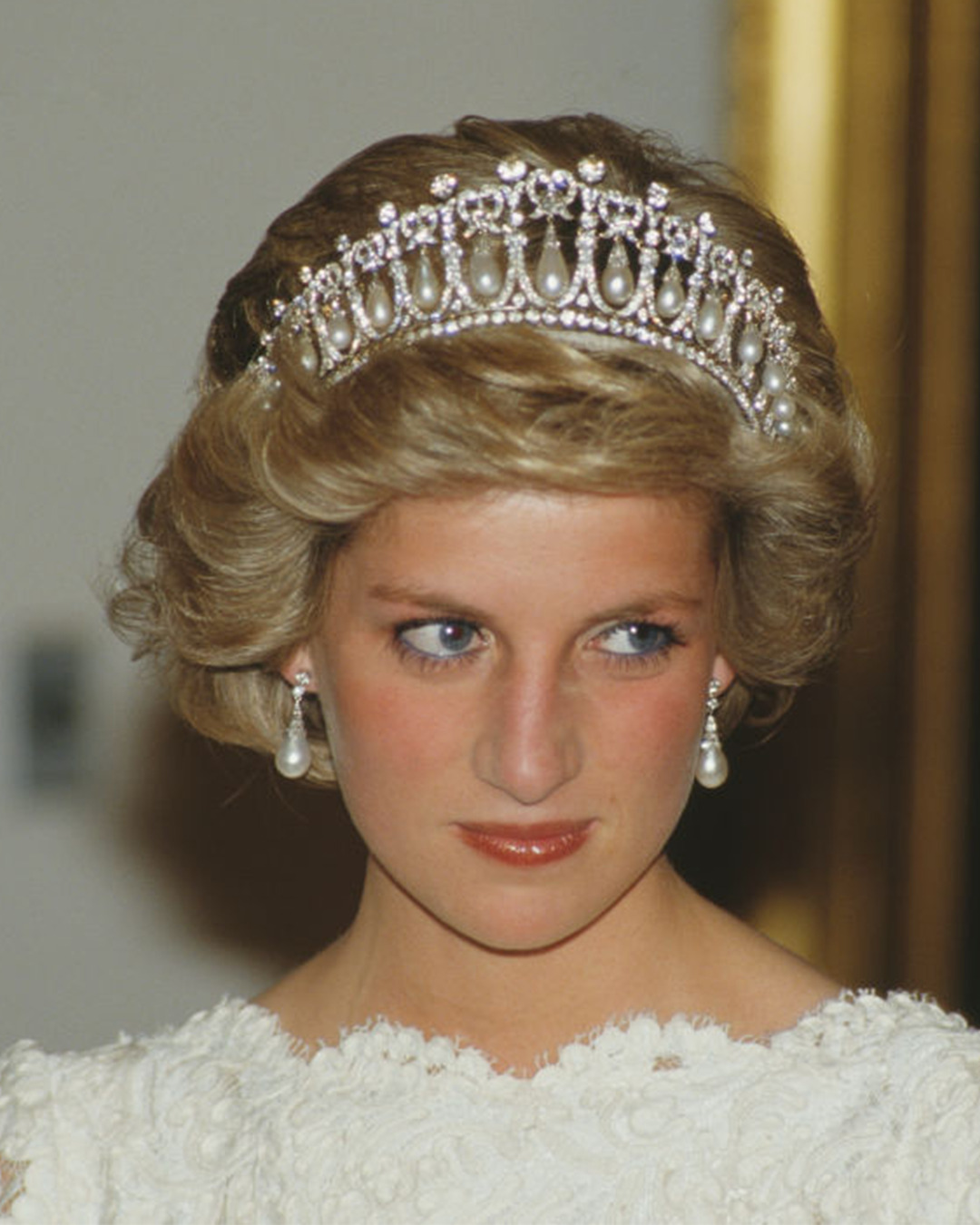
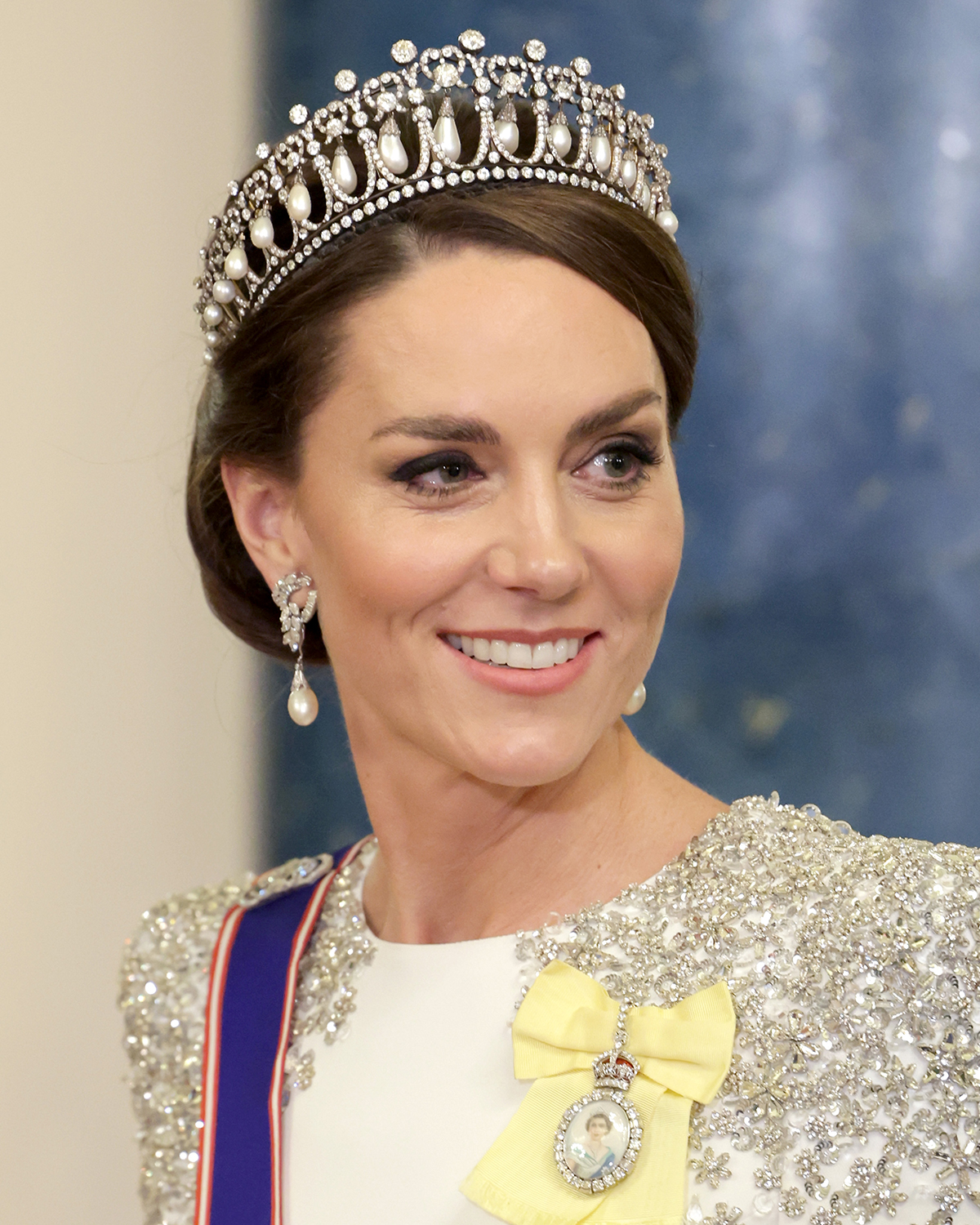
The royal loved the Lover’s Knot so much, it’s been said that she suffered for beauty – the tiara allegedly hurt Lady Diana’s head and gave her headaches, due to its heavy and ornate nature. This, however, doesn’t seem to have deterred Kate Middleton, who often wears the crown.
After Charles and Diana divorced, the tiara was returned to the royal family and put into a safe at Buckingham Palace. According to People, the tiara had not been seen since Diana’s death in 1997 until Middleton pulled it out of the vaults in 2015.
The Princess first stepped out in the Lover’s Knot for the annual Diplomatic Reception at Buckingham Palace in 2015 and has continuously worn the tiara on countless occasions since. Considering the royal tiara was inspired by the Duchess of Cambridge of generations past, it’s fitting that Middleton has adopted the diadem in honor of her first HRH title.
Queen Mary’s Girls of Great Britain and Ireland Tiara

Queen Mary’s Girls of Great Britain and Ireland Tiara was named after the women’s clubs across the British Empire, who fundraised to purchase the headpiece as a wedding gift to Queen Elizabeth’s grandmother, Queen Mary, in 1893. Originally, it was topped with pearls and designed to be transformable. The pearls were later replaced with more diamonds. Affectionately referred to as “Granny’s tiara,” it is thought to be one of Queen Elizabeth II’s favorite jewels and among the most memorable of all the royal tiaras made by Garrard. The piece has been featured in official portraits, on stamps, and even on currency.
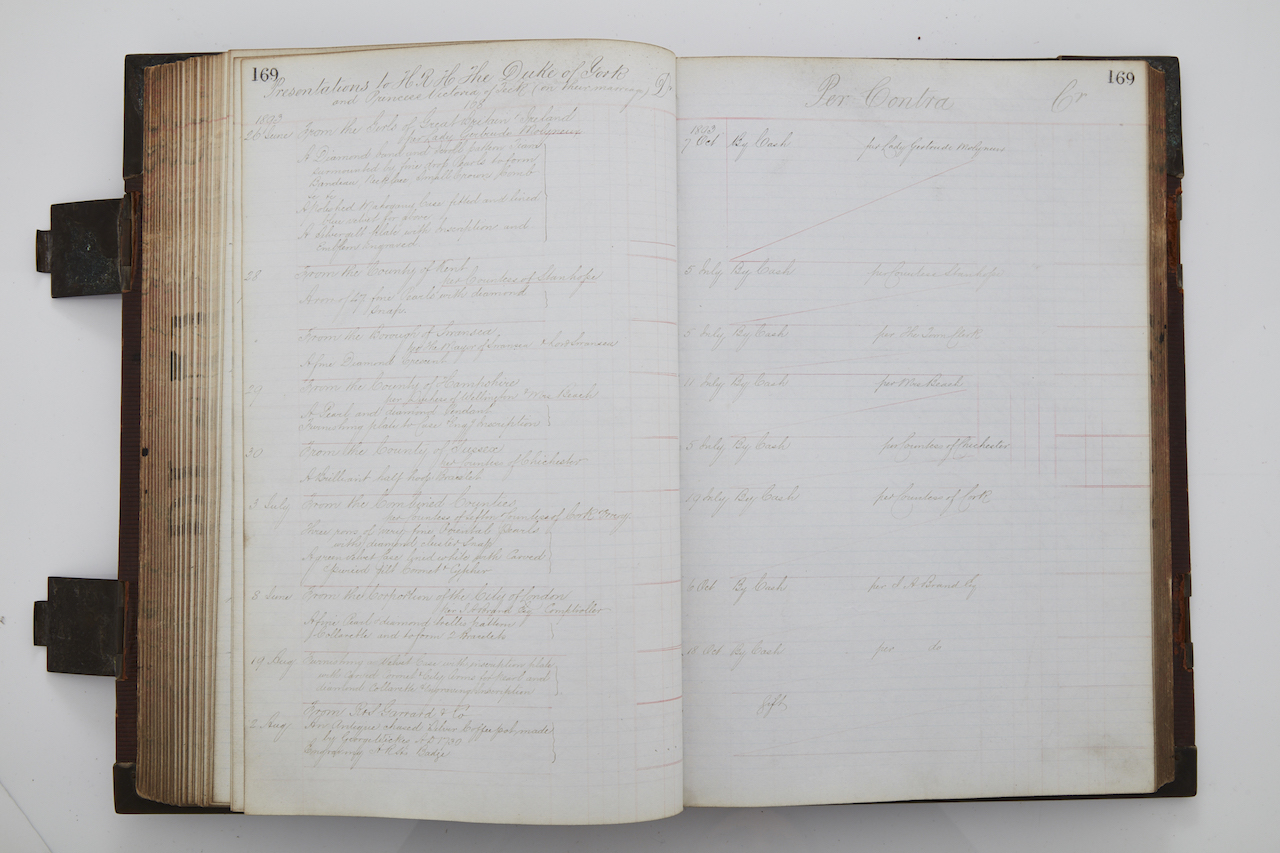
“The Girls of Great Britain and Ireland Tiara is one of Garrard’s most iconic creations, a masterpiece of design and technical versatility,” Scott says. “Its signature Windsor motif has become a cornerstone of our design language, inspiring jewelry past and present. Few jewels embody both history and craftsmanship so seamlessly.”
Queen Alexandra’s Kokoshnik Tiara


Queen Elizabeth II often chose to wear her great-grandmother Queen Alexandra’s diamond Russian Kokoshnik Tiara, commissioned by Garrard in 1888.
The tiara was a gift to Alexandra—then Princess of Wales—from the “Ladies of Society,” presented in honor of her 25th wedding anniversary to the future King Edward VII. Alexandra personally designed the piece, drawing inspiration from a diamond Kokoshnik tiara worn by her sister, Empress Maria Feodorovna of Russia.
With 61 vertical platinum bars set with over 400 perfectly matched natural diamonds, the halo shape of Queen Alexandra’s Kokoshnik Tiara was inspired by the traditional Russian headdress of the same name. The halo-shaped design was also convertible into a necklace. Alexandra wore the tiara often, including for the wedding of her son, the Duke of York, to Princess Victoria Mary of Teck—later King George V and Queen Mary, grandparents to Queen Elizabeth II. Queen Mary inherited the tiara upon Queen Alexandra’s death in 1925. She famously wore it for her official 80th birthday portrait. Queen Mary bequeathed the Kokoshnik Tiara to Queen Elizabeth II in 1953.
“The Kokoshnik Tiara is pure theater- a breathtaking wall of diamonds that radiates power and presence,” Scott says. “It’s no surprise that clients still reference it when commissioning their own bespoke jewels. Its bold, architectural design also directly inspired the creation of the Fringe Tiara.”
Queen Elizabeth II wore the prized piece to plenty of state banquets and royal occasions, including a ball at the White House in 1976, where she danced with President Gerald Ford. She also wore the tiara in her 2001 portrait by British photographer John Swannell.
The Grand Duchess Vladimir Tiara


Among Queen Elizabeth’s favorite headpieces, the Grand Duchess Vladimir Tiara was purchased by her grandmother, Queen Mary, at auction in 1921. But even before it landed in the hands of the British royal family, the tiara had a thrilling tale to tell. Originally made in 1874 by the Russian court jeweler Bolin, the tiara was created for its namesake owner, Grand Duchess Vladimir, the wife of Grand Duke Vladimir Alexandrovich, uncle to Tsar Nicholas II.
According to reports, Grand Duchess Vladimir smuggled her jewels out of Russia during the 1917 revolution with the help of two British antique dealers who posed as servants following the Tsar’s assassination. Though she was the last Romanov to escape Russia, her treasures made it out before she did. After her death in 1920, much of the Grand Duchess’s jewelry was sold to support her children, with many pieces acquired by European royals.
Unfortunately, the Vladimir Tiara was damaged during its journey out of Russia. Queen Mary later commissioned Garrard to restore the historic piece, adding 15 emerald drops and a mechanism that allowed the original pearls to be easily interchanged with the emeralds within its interlocking natural diamond loops. Queen Elizabeth II wore the tiara with pearls, emeralds, and even without any drops. The monarch even donned the tiara for a 1958 portrait in her home and her 1968 portrait by Cecil Beaton. In 1988, Queen Elizabeth II had it repaired again to update the frame.
“The Vladimir Tiara is a remarkable example of how a jewel can evolve across centuries,” Scott explains. “The alterations made at Garrard in the 1920s introduced a level of versatility that allows it to seamlessly alternate between pearls, emeralds or a clean diamond silhouette. It stands as a testament to both the tiara’s enduring beauty and the technical mastery behind its transformation.”
Queen Elizabeth’s Brazilian Aquamarine Tiara

As a gift for her coronation in 1953, Queen Elizabeth II was given a necklace and a pair of earrings from the President of Brazil, featuring the country’s native aquamarine stones. Years later, Brazil added to the suite of jewels, sending her a bracelet and a large brooch. The Queen commissioned Garrard to make a matching tiara of natural diamonds and aquamarines in 1957. By 1971, the jewel was modified with four fan-shaped motifs. The large aquamarine pendant was removed from her necklace and reset at the front of the headpiece.
“The Brazilian Aquamarine Tiara is the epitome of a statement jewel. A masterpiece of regal elegance, it showcases an unparalleled collection of Brazilian aquamarines, impressive in both size and beauty,” says Scott. “The transformation carried out by Garrard in 1971 demonstrates our longstanding expertise in enhancing historic jewels, elevating their presence while respecting their original character.”
Queen Elizabeth’s Burmese Ruby Tiara

In 1973, Her Royal Highness had Garrard create the Burmese Ruby Tiara for her. She requested that the team include an assortment of 96 extremely rare Burmese rubies given to her as a wedding gift from the people of Myanmar (a Commonwealth country, formerly known as Burma).
According to The Court Jeweller, the Queen used diamonds from the dismantled Nizam of Hyderabad Tiara that she also received as a wedding gift from an Indian prince. The glistening rubies and diamonds are set in a rose petal motif, inspired by the Tudor Rose. In Burmese culture, the stones are believed to protect against evil and illness. While Queen Elizabeth remained politically neutral, many noted the symbolism when she wore the tiara for US President Donald Trump’s state visit in 2019. Following the Queen’s death, the tiara was worn by Queen Camilla at a state banquet in 2023.
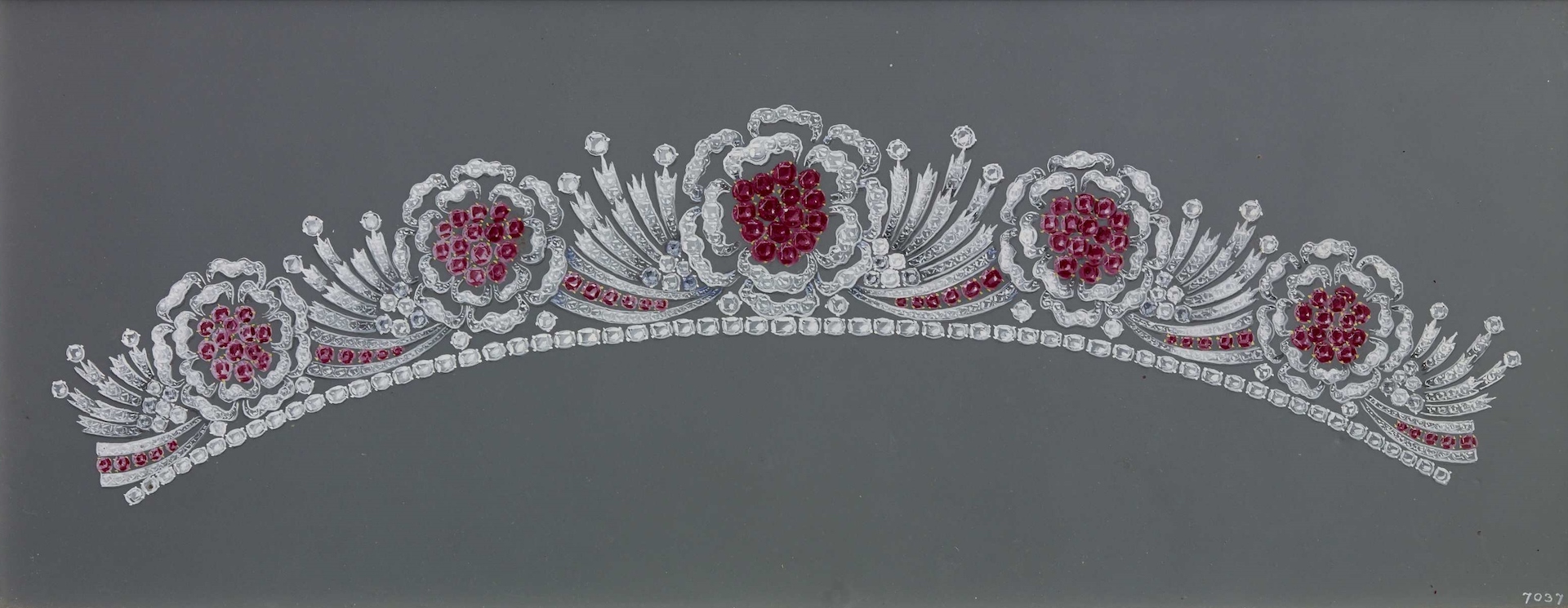
Scott says, “By incorporating 96 rubies representing protection and well-being, the design carries meaning far beyond its brilliance. Inspired by the Tudor Rose, it is a jewel that embodies heritage, exquisite craftsmanship and timeless beauty.”
Queen Elizabeth’s Belgian Sapphire Tiara
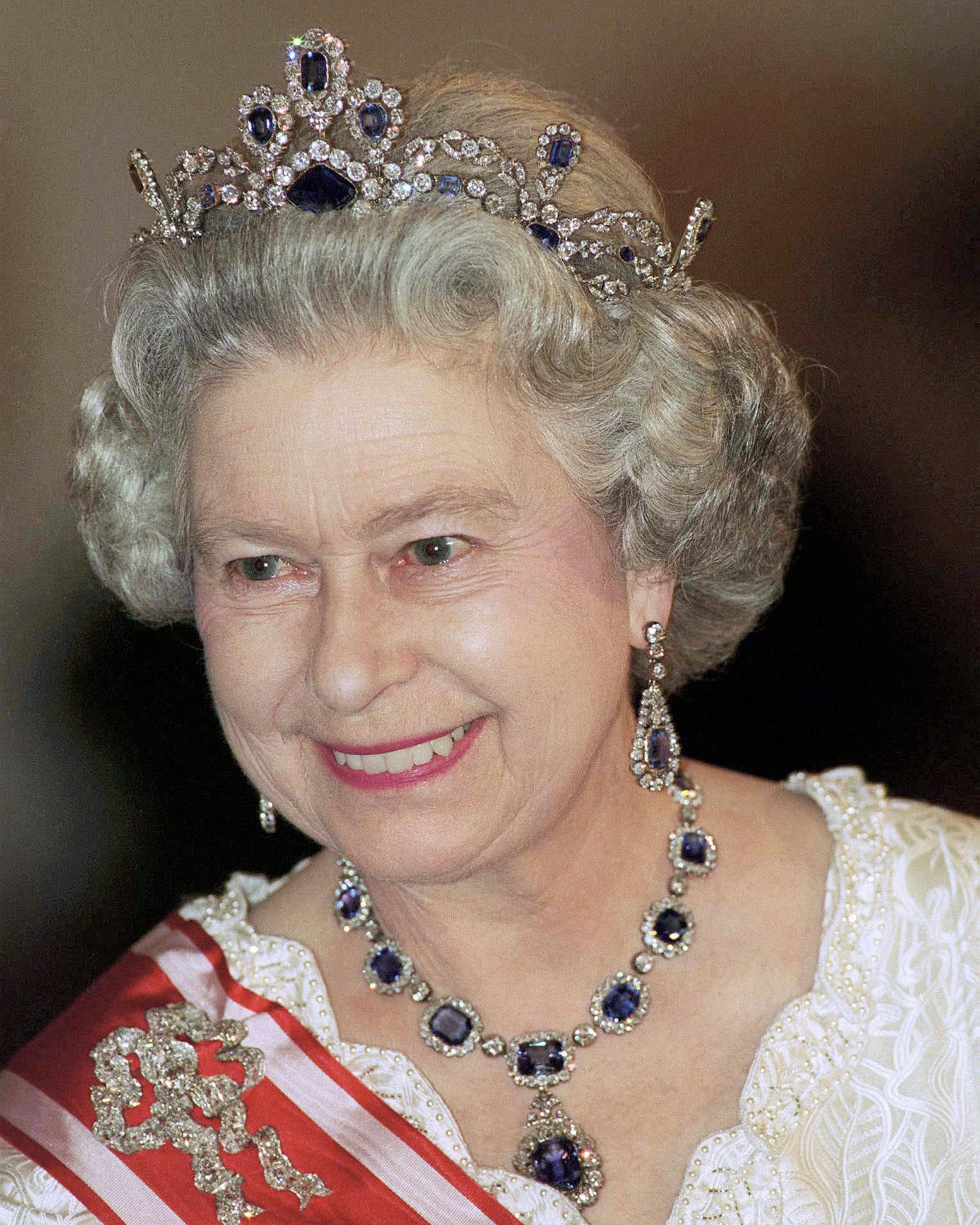
In 1963, Queen Elizabeth added to her preexisting sentimental diamond and sapphire parure when she commissioned a new bracelet and tiara, made from an antique sapphire and diamond necklace that previously belonged to Princess Louise of Belgium. The Queen wore the complete parure for two state banquets in a row, for President Xi Jinping of China in 2015 and President Juan Manuel Santos of Colombia in 2016. She wore the suite again for her Canadian portrait in 2020 – the last time she would be photographed wearing a tiara.
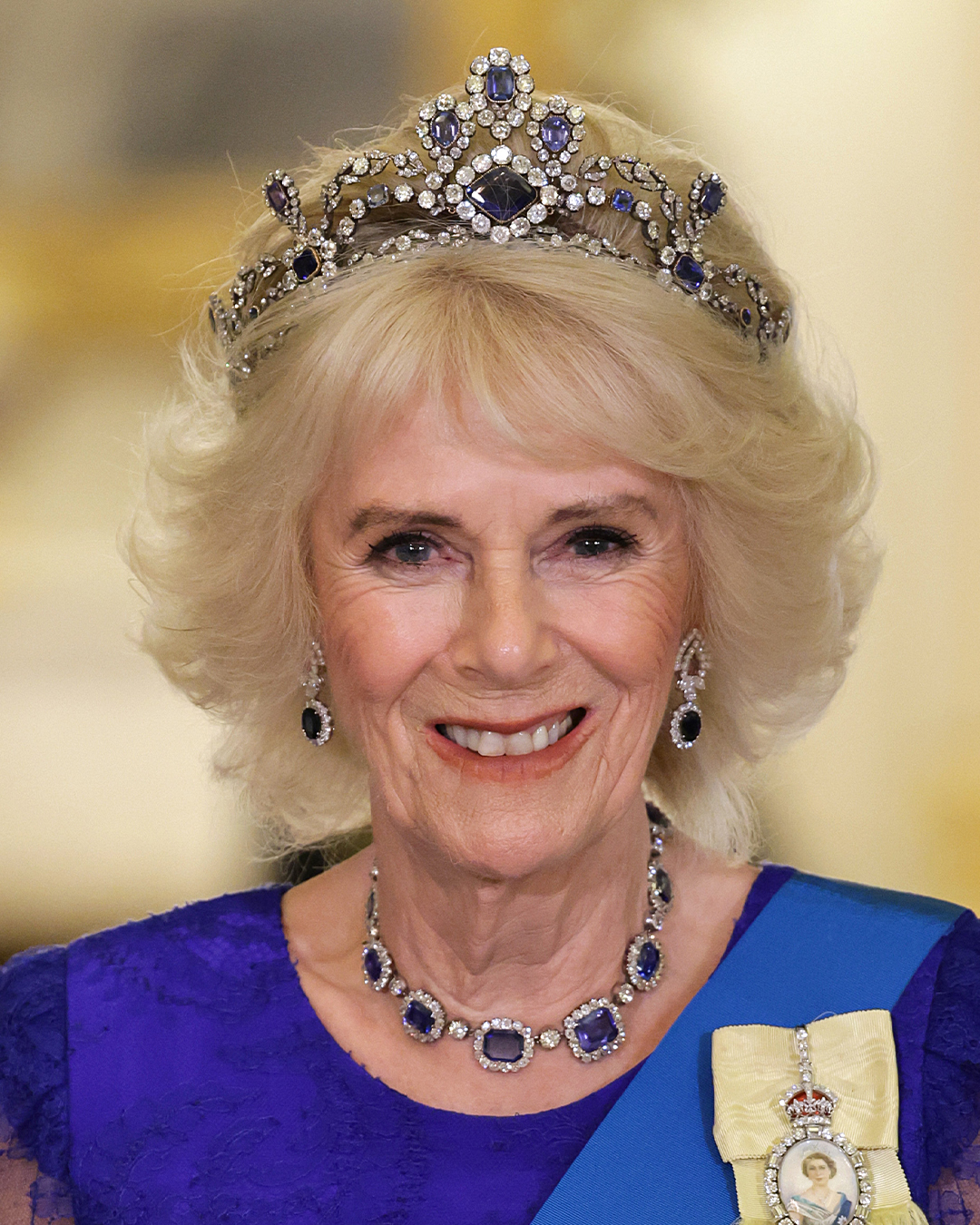
In 2022, King Charles and Queen Consort Camilla hosted their first state visit as reigning monarchs for President Cyril Ramaphosa of the Republic of South Africa. To honor her late mother-in-law, Queen Camilla wore the beloved diamond and sapphire set for the occasion.
Queen Elizabeth II’s royal tiaras were more than royal accessories; they were enduring emblems of duty, heritage, and personal expression. From treasured heirlooms passed down through generations to pieces she made her own, each tiara tells a story not just of regal tradition, but of the woman who wore it. As they continue to sparkle on the heads of future queens, these natural diamond masterpieces remain a dazzling legacy of Elizabeth’s reign.
